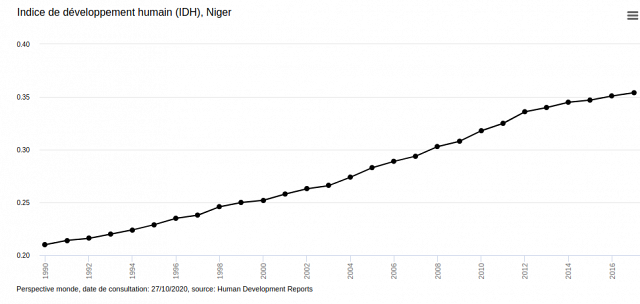The human development index (HDI) is a composite index created by the United Nations program for development to measure every country’s human development. It takes into account life expectation at birth, the level of education as well as the gross domestic product per inhabitant.
Niger is placed last but one, of all the countries with lowest human development index. In 2018, this is accounted for by the country’s very low rank in life expectancy, standard of living and schooling. Indeed, a Nigerien is unlikely to live more than 60 years and to attend school more than 5 years, which is the world lowest schooling. Moreover, the average Nigerien lives on less than 1000 dollars per year.
Nevertheless, the country‘s low rank is to be mitigated. Niger enjoys great resources, particularly natural resources (uranium, oil, gas, gold). However such resources are sometimes hidden by the country’s unrestrained demographic growth (3.8 percent per year on average).
Which is accounted for by the highest fertility rate in the world with 6 children per woman on average in 2017, as well as the rise in life expectation at birth.
Looking at the evolution of human development in Niger, progress is however obvious, since HDI has risen from 0.21 in 1990 to 0.38 in 2018. Looking closer to data since the nineties, life expectancy has risen from 49 to 56 years. Still at the bottom of the classification, Niger is improving, although education remains weak.
This article is based on a text by Eliot Martin, written within his internship with AESCD in September 2020.
Références: https://en.populationdata.net/countries/niger/


